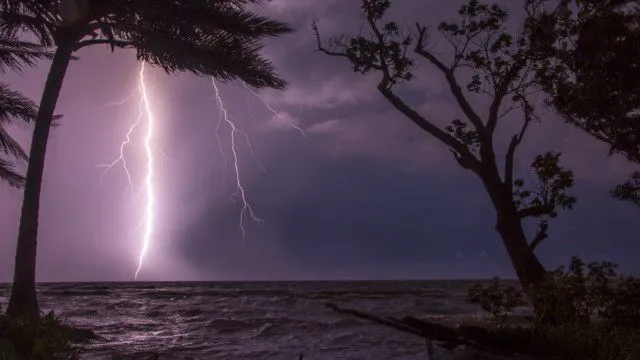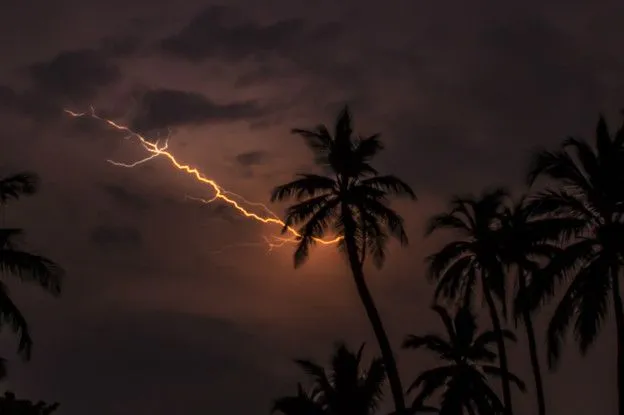
Hola comunidad Hive, hoy quiero compartir con ustedes sobre un lugar un tanto extraño para muchos, ya que en dicho lugar ocurre un fenómeno meteorológico en el mundo.
En la localidad de Ologá, sobre el lago de Maracaibo (estado Zulia, al occidente de Venezuela), es casi imposible observar la noche en su oscuro esplendor.
Entre abril y noviembre, relámpagos aparecen y desaparecen de manera constante en el cielo, un fenómeno que se ha vuelto costumbre para los residentes y un "milagro" para los ojos de los visitantes.
Hello Hive community, today I want to share with you about a strange place for many, because in this place a meteorological phenomenon occurs in the world.
In the town of Ologá, on Lake Maracaibo (Zulia state, western Venezuela), it is almost impossible to observe the night in its dark splendor.
Between April and November, lightning constantly appears and disappears in the sky, a phenomenon that has become customary for residents and a "miracle" to the eyes of visitors.

Al año ocurren en promedio 297 tormentas eléctricas, de las cuales se desprende este espectáculo de luces naturales.
Ese registro fue realizado por la agencia espacial estadounidense NASA y por las universidades de Maryland y Alabama (ambas en EE.UU.) y la de Sao Paulo (Brasil), y confirmaron que el lago de Maracaibo es la "capital" de los relámpagos en la Tierra.
La NASA recogió en EarthData la información de diversas investigaciones sobre los relámpagos de Catatumbo. Según se ha visto, el fenómeno llega a darse entre 260 y 300 días al año, llegando a haber 250 rayos por km² (por lo que le dieron un récord Guinnes, por cierto). Ángel G. Muñoz, físico investigador en la NOAA (National Oceanic and Atmospheric Administration), destacaba que llega a provocar un gran número de muertes al año, enfatizando que un 25% de la población de Venezuela habita en el área donde se suele dar.
An average of 297 thunderstorms occur each year, from which this natural light show emerges.
This record was made by the U.S. space agency NASA and the universities of Maryland and Alabama (both in the U.S.) and the University of Sao Paulo (Brazil), and confirmed that Lake Maracaibo is the "capital" of lightning on Earth.
NASA collected in EarthData the information of several investigations on the lightning of Catatumbo. According to what has been seen, the phenomenon occurs between 260 and 300 days a year, reaching 250 lightning strikes per km² (for which it was given a Guinness record, by the way). Angel G. Muñoz, research physicist at NOAA (National Oceanic and Atmospheric Administration), pointed out that it causes a large number of deaths per year, emphasizing that 25% of the population of Venezuela lives in the area where it usually occurs.

The lightning flashes occur some time after sunset, when it begins to get dark or when the sky is already darkened, but according to the researchers it is as if it were daytime due to the continuity of the lightning. They speak of about 28 lightning strikes per minute for nine hours over Lake Maracaibo. According to NASA, when it occurs, enough energy would be generated to illuminate 100 million light bulbs and 10 minutes of lightning from Catatumbo would be enough to illuminate all of South America, a phenomenon that has been described for centuries.
Translated with https://www.deepl.com/translator
Fuente de la información:
